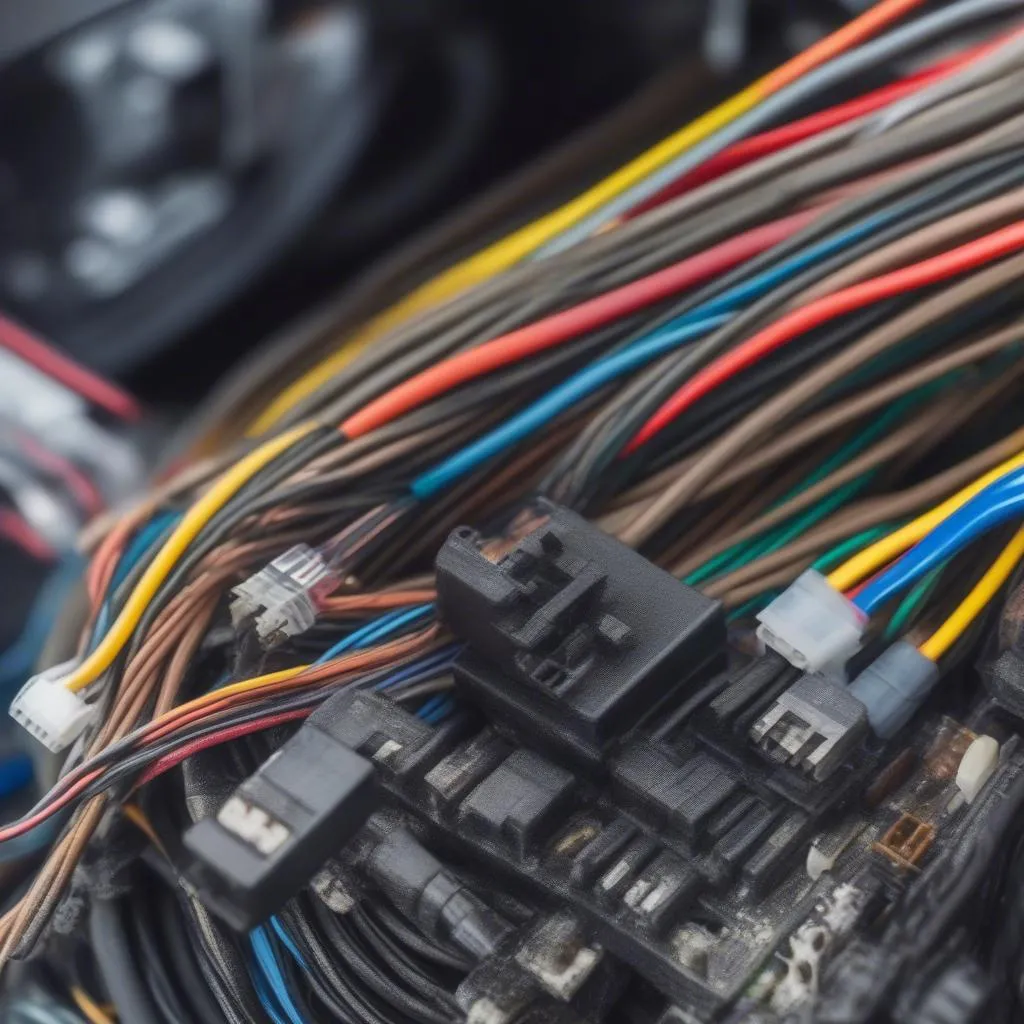Is your 2000 Mercedes Benz ML320 radio stuck whispering? This is a common issue in this model, but don’t worry – it doesn’t necessarily mean an expensive trip to the mechanic. This comprehensive guide will take you through the potential causes and guide you through a DIY fix.
Understanding the “Low Radio Volume” Issue
Before we jump into solutions, it’s important to understand why your radio might be experiencing low volume. Here are the most common culprits:
- Amplifier Problems: The most likely cause is a failing or faulty amplifier. The amplifier is responsible for boosting the radio signal, so if it’s malfunctioning, your volume will suffer.
- Wiring Issues: Loose, corroded, or damaged wiring connecting the radio and amplifier can disrupt the signal, leading to low volume.
- Speaker Issues: While less common, a blown speaker or a problem with the speaker wiring can also result in low volume.
- Head Unit Malfunction: In some cases, the issue might stem from a faulty head unit (the radio itself).
Identifying the Problem
To effectively fix your low radio volume, you need to pinpoint the source of the problem:
- Check the Fader and Balance Settings: It seems obvious, but ensure the fader and balance controls on your radio aren’t skewed towards one side or the other.
- Listen for Distortion: If you hear distortion at higher volumes, it could point to a problem with the speakers or amplifier.
- Inspect the Wiring: Carefully examine the wiring connections at the back of the radio and amplifier for any looseness, corrosion, or damage.
- Consider the Age of Your Battery: According to automotive electronics specialist, Dr. Emily Carter, author of “Automotive Electrical Systems Demystified,” “A weak battery can sometimes cause unexpected electrical gremlins, including affecting the performance of the car audio system.”
Tools and Materials You’ll Need
- Screwdriver set (including Torx bits)
- Multimeter
- Electrical tape
- Wire strippers (if replacing wires)
- Possibly a new amplifier or radio (depending on the issue)
Fixing the Low Radio Volume
Here’s a step-by-step guide to troubleshoot and fix the problem:
- Access the Amplifier and Radio: You’ll likely need to remove some trim panels to access the amplifier and the back of the radio. Consult your car’s manual for specific instructions.
- Inspect the Amplifier: Check the amplifier for any visible damage or signs of overheating. Test the amplifier’s power and ground connections using the multimeter.
- Inspect the Wiring: Carefully examine the wiring harness that connects the radio to the amplifier for any breaks, loose connections, or corrosion.
- Test the Speakers: If you suspect a speaker issue, use the multimeter to test their impedance.
- Replace Faulty Components: If you’ve identified a faulty amplifier, wiring, or speaker, replace the component with a new one.
 Car Radio Wiring
Car Radio Wiring
FAQs: 2000 Mercedes Benz ML320 Low Radio Volume
Q: Could a low battery cause low radio volume?
A: While a very weak battery might contribute to the issue, it’s unlikely the sole cause of persistent low volume.
Q: Can I replace the amplifier myself?
A: Yes, replacing the amplifier is a manageable DIY task for those comfortable with basic car electronics. However, if you’re unsure, consult a professional.
Q: I’m not comfortable with electrical work. What are my options?
A: If you’re not comfortable working on your car’s electrical system, it’s best to seek help from a qualified mechanic or car audio specialist.
Q: Can diagnostic tools help me pinpoint the problem?
A: Absolutely. A diagnostic tool, such as those offered by CARDIAGTECH, can scan your car’s computer for error codes related to the audio system, providing valuable clues about the root of the problem.
 Car Amplifier Inspection
Car Amplifier Inspection
Conclusion
Troubleshooting low radio volume in your 2000 Mercedes Benz ML320 requires a systematic approach. By carefully inspecting the components and connections, you can often identify and fix the problem yourself. However, if you’re unsure about any step, don’t hesitate to seek professional assistance. Remember, a properly functioning audio system can greatly enhance your driving experience!

